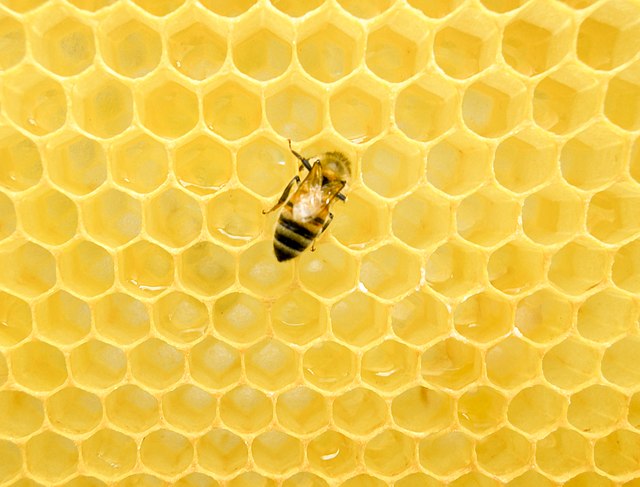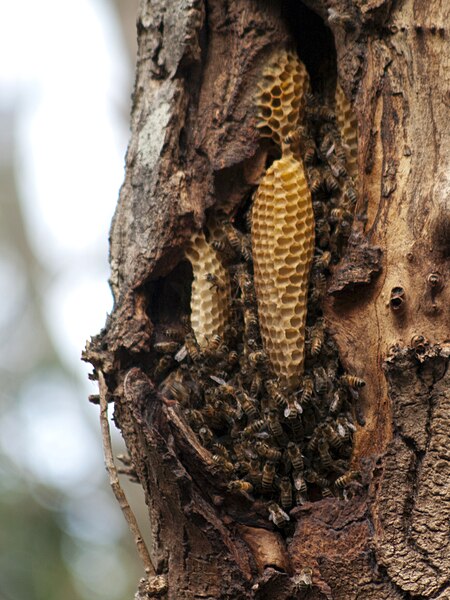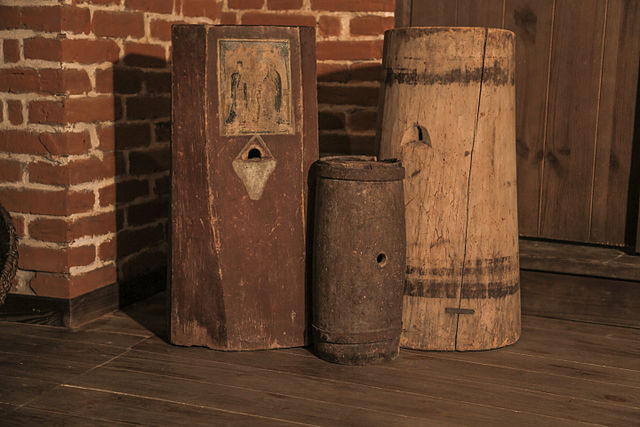A beehive is an enclosed structure in which some honey bee species of the subgenus Apis live and raise their young. Though the word beehive is used to describe the nest of any bee colony, scientific and professional literature distinguishes nest from hive. Nest is used to discuss colonies that house themselves in natural or artificial cavities or are hanging and exposed. The term hive is used to describe an artificial/man-made structure to house a honey bee nest. Several species of Apis live in colonies. But for honey production, the western honey bee and the eastern honey bee are the main species kept in hives.
Painted wooden beehives with active honey bees
A honeycomb created inside a wooden beehive
Natural bee colony in the hollow of a tree
Hives from the collection of Radomysl Castle, Ukraine, 19th century
Beeswax is a natural wax produced by honey bees of the genus Apis. The wax is formed into scales by eight wax-producing glands in the abdominal segments of worker bees, which discard it in or at the hive. The hive workers collect and use it to form cells for honey storage and larval and pupal protection within the beehive. Chemically, beeswax consists mainly of esters of fatty acids and various long-chain alcohols.
Beeswax cake
Commercial honeycomb foundation, made by pressing beeswax between patterned metal rollers
Fresh wax scales (in the middle of the bottom row)
Uncapping beeswax honeycombs








